
SameGame (さめがめ) is a tile-matching puzzle video game originally released under the name CHAIN SHOT in 1985 by Kuniaki "Morisuke" Moribe. It has since been ported to numerous computer platforms, handheld devices, and even TiVo, with new versions as of 2016.

Puzzle video games make up a broad genre of video games that emphasize puzzle solving. The types of puzzles can test problem-solving skills, including logic, pattern recognition, sequence solving, spatial recognition, and word completion. Many puzzle games involve a real-time element and require quick thinking, such as Tetris (1985) and Lemmings (1991).

A gyroscope is a device used for measuring or maintaining orientation and angular velocity. It is a spinning wheel or disc in which the axis of rotation is free to assume any orientation by itself. When rotating, the orientation of this axis is unaffected by tilting or rotation of the mounting, according to the conservation of angular momentum.

A toy or plaything is an object that is used primarily to provide entertainment. Simple examples include toy blocks, board games, and dolls. Toys are often designed for use by children, although many are designed specifically for adults and pets. Toys can provide utilitarian benefits, including physical exercise, cultural awareness, or academic education. Additionally, utilitarian objects, especially those which are no longer needed for their original purpose, can be used as toys. Examples include children building a fort with empty cereal boxes and tissue paper spools, or a toddler playing with a broken TV remote. The term "toy" can also be used to refer to utilitarian objects purchased for enjoyment rather than need, or for expensive necessities for which a large fraction of the cost represents its ability to provide enjoyment to the owner, such as luxury cars, high-end motorcycles, gaming computers, and flagship smartphones.

A differential is a gear train with three drive shafts that has the property that the rotational speed of one shaft is the average of the speeds of the others. A common use of differentials is in motor vehicles, to allow the wheels at each end of a drive axle to rotate at different speeds while cornering. Other uses include clocks and analogue computers. Differentials can also provide a gear ratio between the input and output shafts. For example, many differentials in motor vehicles provide a gearing reduction by having fewer teeth on the pinion than the ring gear.
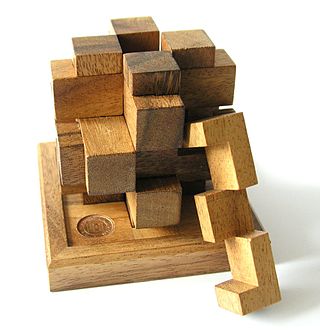
A mechanical puzzle is a puzzle presented as a set of mechanically interlinked pieces in which the solution is to manipulate the whole object or parts of it. While puzzles of this type have been in use by humanity as early as the 3rd century BC, one of the most well-known mechanical puzzles of modern day is the Rubik's Cube, invented by the Hungarian architect Ernő Rubik in 1974. The puzzles are typically designed for a single player, where the goal is for the player to discover the principle of the object, rather than accidentally coming up with the right solution through trial and error. With this in mind, they are often used as an intelligence test or in problem solving training.

A manual transmission (MT), also known as manual gearbox, standard transmission, or stick shift, is a multi-speed motor vehicle transmission system where gear changes require the driver to manually select the gears by operating a gear stick and clutch.
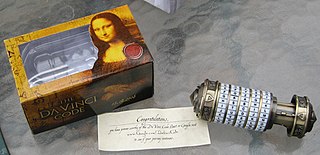
The word cryptex is a neologism coined by the author Dan Brown for his 2003 novel The Da Vinci Code, denoting a portable vault used to hide secret messages. It is a word formed from Greek κρυπτόςkryptós, "hidden, secret" and Latin codex; "an apt title for this device" since it uses "the science of cryptology to protect information written on the contained scroll or codex". The first physical cryptex was created by Justin Kirk Nevins in 2004.

A caster is an undriven wheel that is designed to be attached to the bottom of a larger object to enable that object to be moved.

Hexic is a 2003 tile-matching puzzle video game developed by Carbonated Games for various platforms. In Hexic, the player tries to rotate hexagonal tiles to create certain patterns. The game is available on Windows, Xbox 360, Windows Phone and the web. Many clones are available for Android and iOS. The game was designed by Alexey Pajitnov, best known as the creator of Tetris. While most earlier releases of the game were developed by Carbonated Games, the most recent version released for Windows and Windows Phone is developed by Other Ocean. The name is a portmanteau of the words "hectic" and "hexagon".
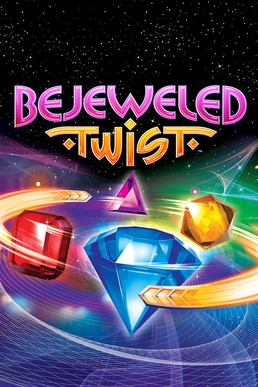
Bejeweled Twist is a tile-matching puzzle video game developed and published by PopCap Games. It is the third game overall and first spin-off game in the Bejeweled series, as well as being the first PopCap title to be released in high definition and feature widescreen support.

An inertial navigation system is a navigation device that uses motion sensors (accelerometers), rotation sensors (gyroscopes) and a computer to continuously calculate by dead reckoning the position, the orientation, and the velocity of a moving object without the need for external references. Often the inertial sensors are supplemented by a barometric altimeter and sometimes by magnetic sensors (magnetometers) and/or speed measuring devices. INSs are used on mobile robots and on vehicles such as ships, aircraft, submarines, guided missiles, and spacecraft. Older INS systems generally used an inertial platform as their mounting point to the vehicle and the terms are sometimes considered synonymous.

Dream Chronicles, first released in 2007, is a series of adventure, hidden object and puzzle casual games. It was created by Miguel Angel Tartaj for KatGames and published by PlayFirst. It is also the name of the first game in the series.
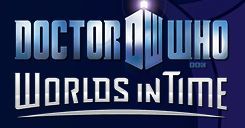
Doctor Who: Worlds in Time is a massively multiplayer online role-playing game (MMORPG) created for the Adobe Flash platform developed by Three Rings Design, a SEGA studio following their acquisition in 2011. It was based on the science fiction series Doctor Who and was commercially released on 12 March 2012 and was closed on 3 March 2014.

A tile-matching video game is a type of puzzle video game where the player manipulates tiles in order to make them disappear according to a matching criterion. In many tile-matching games, that criterion is to place a given number of tiles of the same type so that they adjoin each other. That number is often three, and these games are called match-three games.
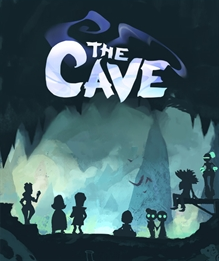
The Cave is a puzzle-platform, adventure game developed by Double Fine Productions and published by Sega in January 2013 on the PlayStation Network, Nintendo eShop and Xbox Live Arcade storefronts via the PlayStation 3, Wii U and Xbox 360 consoles and on Steam for Microsoft Windows, OS X and Linux. It was later released on October 3, 2013 on iOS devices and Android. On December 2, 2013 it was also released on the Ouya. The game has been delisted from console storefronts as of April 2, 2018, making it a Steam exclusive until 2023.

Botanica is a series of casual hidden object puzzle adventure games that is a combination of fantasy and science fiction. It was developed by Boomzap Entertainment and published exclusively by Big Fish Games. The games are available on PC and Mac platforms and with iPhone and iPad versions for the first title.

Lara Croft Go is a puzzle video game developed by Square Enix Montreal and published by Square Enix. A spin-off of the Tomb Raider series. The player moves Lara Croft as a puzzle piece through a board game while avoiding obstacles and manipulating the environment. The developers distilled major series motifs, such as boulder-chases and reaction-based gameplay, to suit Lara Croft Go's time-independent gameplay. The game was developed as a spiritual successor to its 2014 Hitman Go, based on another Square Enix Europe franchise. It was released in August 2015 for Android, iOS, Windows, and Windows Phone devices. Versions for PlayStation 4 PlayStation Vita and Steam were released in December 2016.

Homescapes is a casual free-to-play puzzle game. It was developed and launched by Playrix in 2017 as a spiritual successor to their 2016 match-3 game, Gardenscapes. The storyline narrates attempts by the game's protagonist, Austin the Butler, to restore his childhood home. The game is available on Apple's App Store for iOS and macOS, and also on Android via Google Play, Amazon Appstore, or Huawei AppGallery. It is also available for Windows on the Microsoft Store.
















